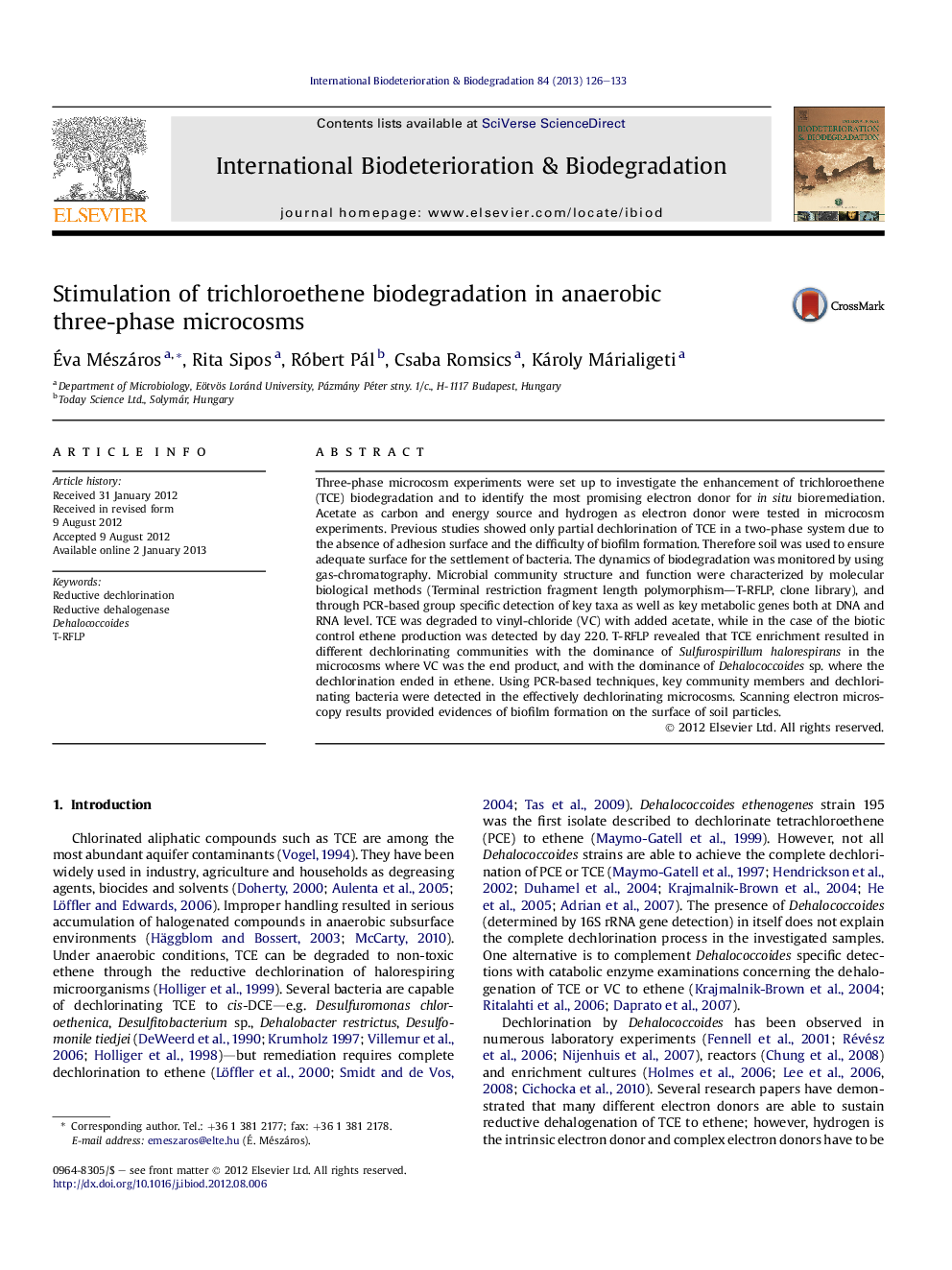| Article ID | Journal | Published Year | Pages | File Type |
|---|---|---|---|---|
| 6289446 | International Biodeterioration & Biodegradation | 2013 | 8 Pages |
Abstract
Three-phase microcosm experiments were set up to investigate the enhancement of trichloroethene (TCE) biodegradation and to identify the most promising electron donor for in situ bioremediation. Acetate as carbon and energy source and hydrogen as electron donor were tested in microcosm experiments. Previous studies showed only partial dechlorination of TCE in a two-phase system due to the absence of adhesion surface and the difficulty of biofilm formation. Therefore soil was used to ensure adequate surface for the settlement of bacteria. The dynamics of biodegradation was monitored by using gas-chromatography. Microbial community structure and function were characterized by molecular biological methods (Terminal restriction fragment length polymorphism-T-RFLP, clone library), and through PCR-based group specific detection of key taxa as well as key metabolic genes both at DNA and RNA level. TCE was degraded to vinyl-chloride (VC) with added acetate, while in the case of the biotic control ethene production was detected by day 220. T-RFLP revealed that TCE enrichment resulted in different dechlorinating communities with the dominance of Sulfurospirillum halorespirans in the microcosms where VC was the end product, and with the dominance of Dehalococcoides sp. where the dechlorination ended in ethene. Using PCR-based techniques, key community members and dechlorinating bacteria were detected in the effectively dechlorinating microcosms. Scanning electron microscopy results provided evidences of biofilm formation on the surface of soil particles.
Related Topics
Life Sciences
Environmental Science
Environmental Science (General)
Authors
Ãva Mészáros, Rita Sipos, Róbert Pál, Csaba Romsics, Károly Márialigeti,
